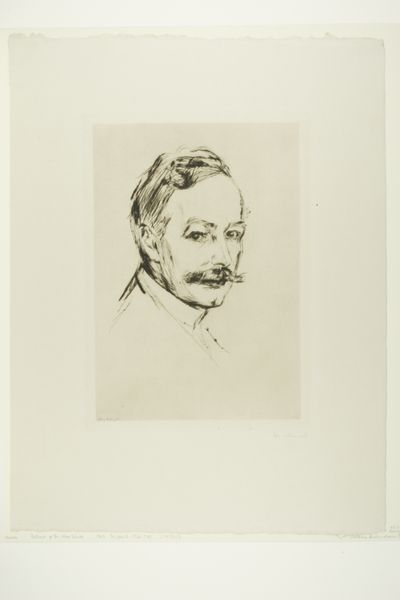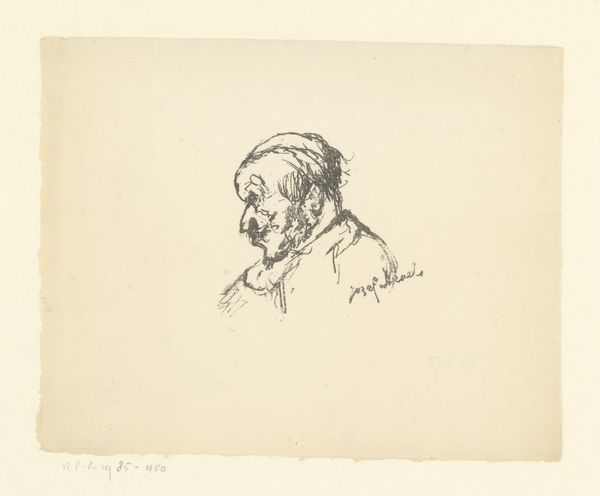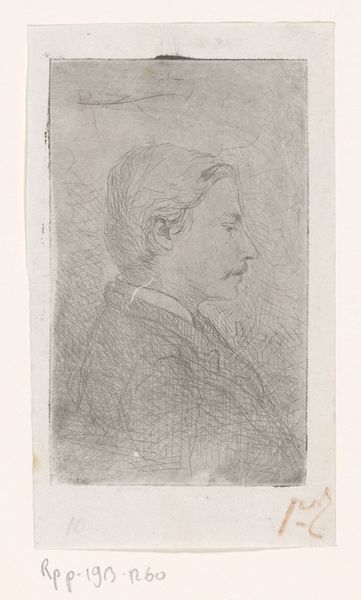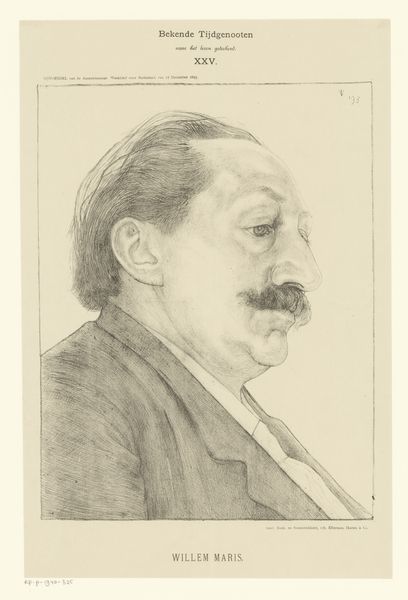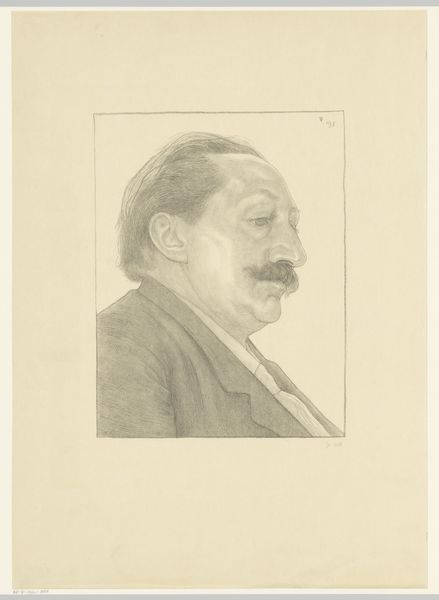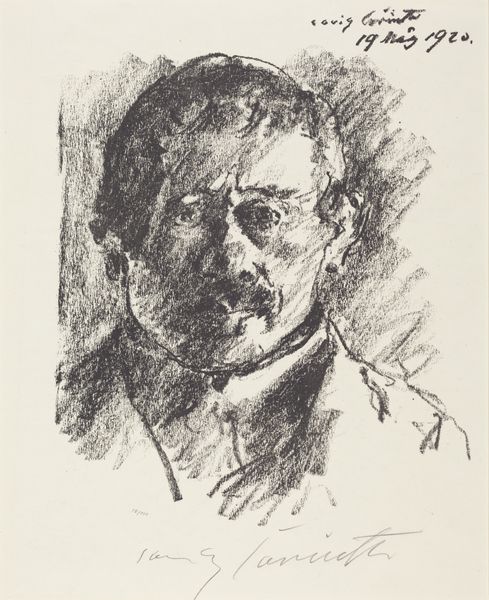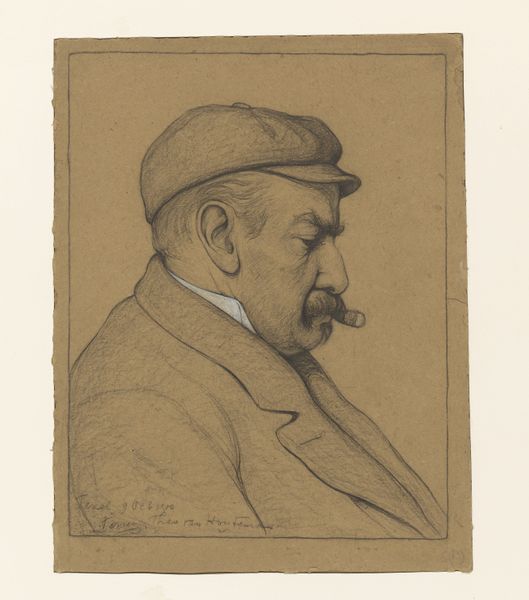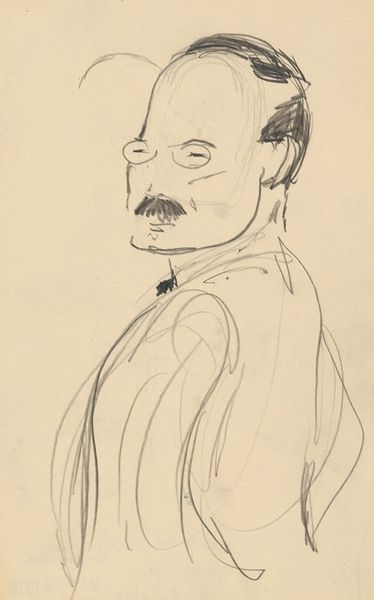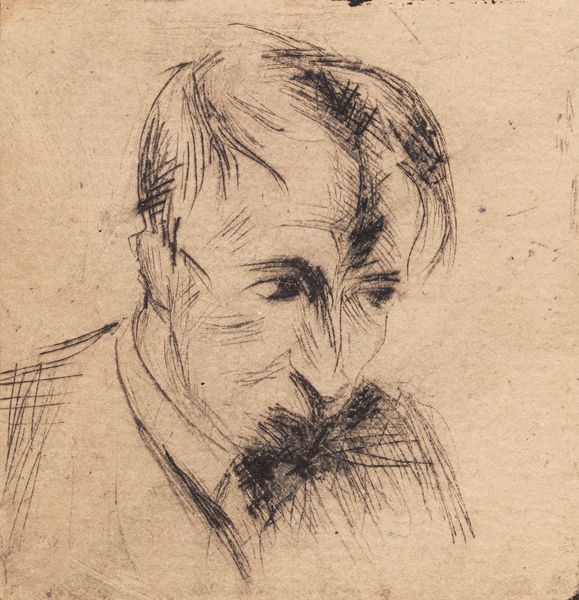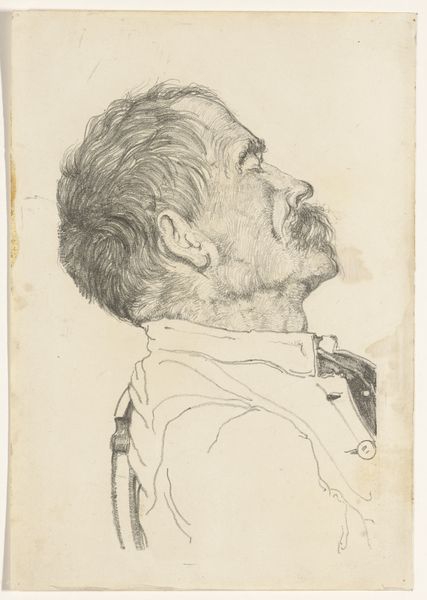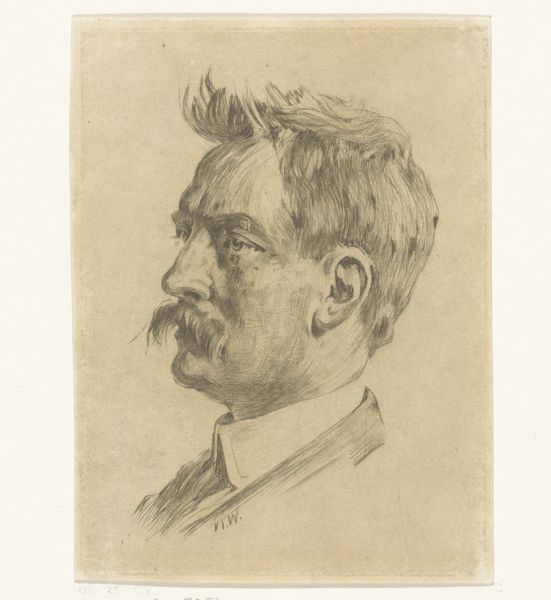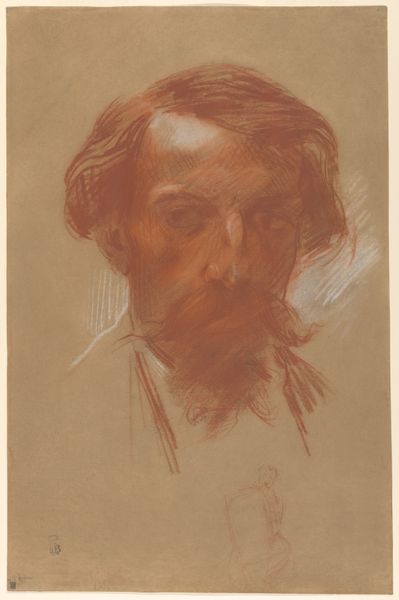
drawing, pencil
#
portrait
#
drawing
#
ink drawing
#
self-portrait
#
pencil sketch
#
pencil
#
realism
Dimensions: height 139 mm, width 82 mm
Copyright: Rijks Museum: Open Domain
Editor: Here we have "Portret van onbekende" or "Portrait of an Unknown Person" by Johan Michaël Schmidt Crans, created sometime between 1875 and 1895. It appears to be a pencil drawing, quite delicate. It looks like a quick sketch, focusing mainly on the man's profile. What stands out to you when you examine this portrait? Curator: The dynamism of the lines captures my immediate attention. Notice the varying weights and densities; how confident and precise the strokes are that define the nose and moustache versus the looser hatching used to indicate the hair. The contrast creates a visual rhythm, wouldn't you agree? Editor: Yes, I see what you mean! The nose has a definitive outline compared to the rest. But what do you make of the starkness? It feels incomplete somehow. Curator: Indeed. Consider how the negative space becomes a crucial formal element. The rough, torn edges of the paper and the large blank areas contribute to the work's incompleteness. The unfinished nature emphasizes the drawing's materiality, it foregrounds the physical characteristics of the medium itself and the artistic process. Do you observe any relationship between the marks on the figure versus on the sheet? Editor: It's like the "B" in the upper-left corner and "V" in the lower-left. Maybe it's not entirely about the figure, the material choices elevate this from a simple portrait to an artistic inquiry itself? Curator: Precisely! It's an investigation of form, line, and the act of representation. It moves past mere likeness. The material is an intrinsic part of its message. What a successful case study to understand the relevance of materials! Editor: This was great; I now look at how the form and material shapes a work rather than focusing too much on symbolism and historical elements. Thanks so much!
Comments
No comments
Be the first to comment and join the conversation on the ultimate creative platform.
